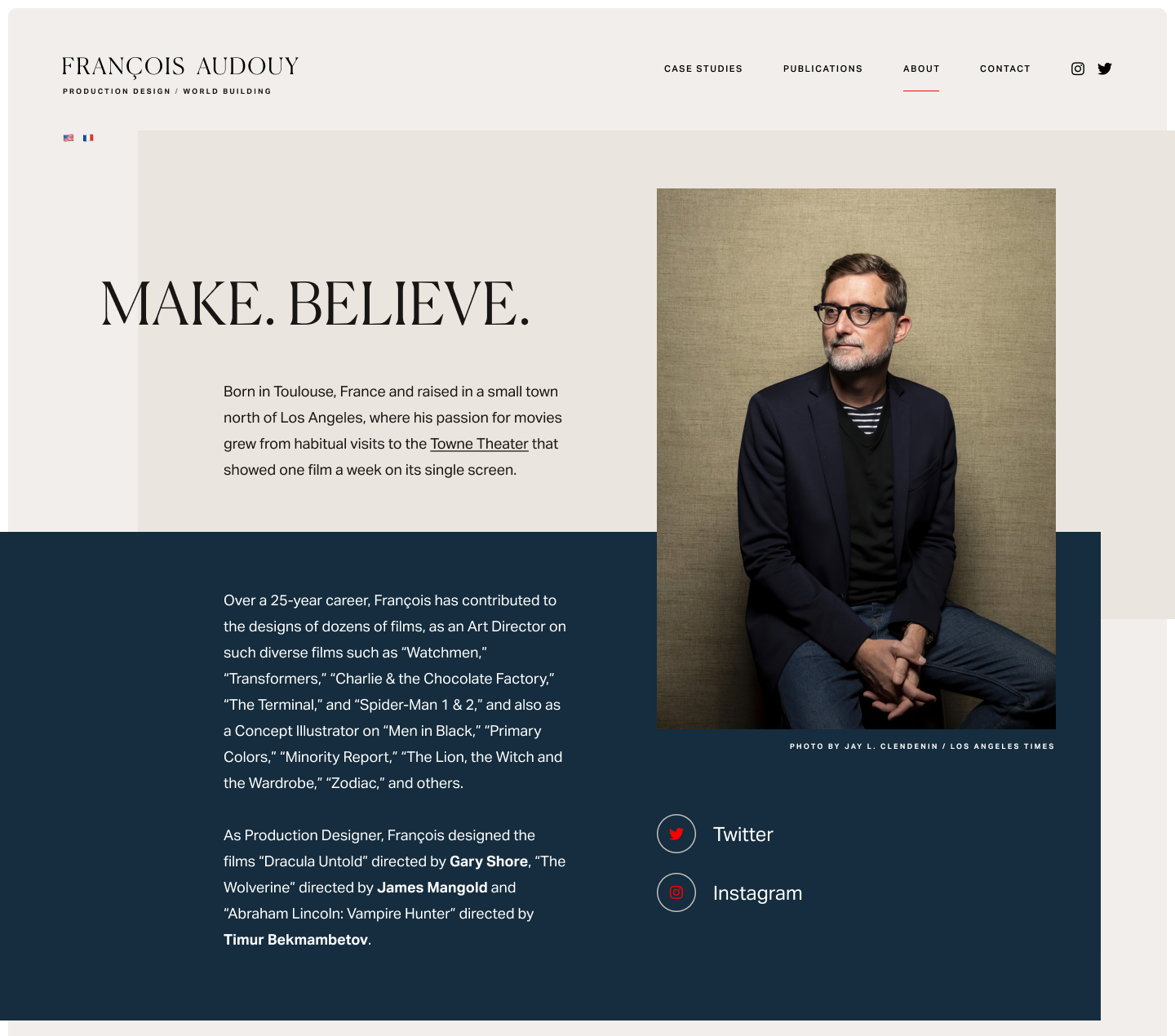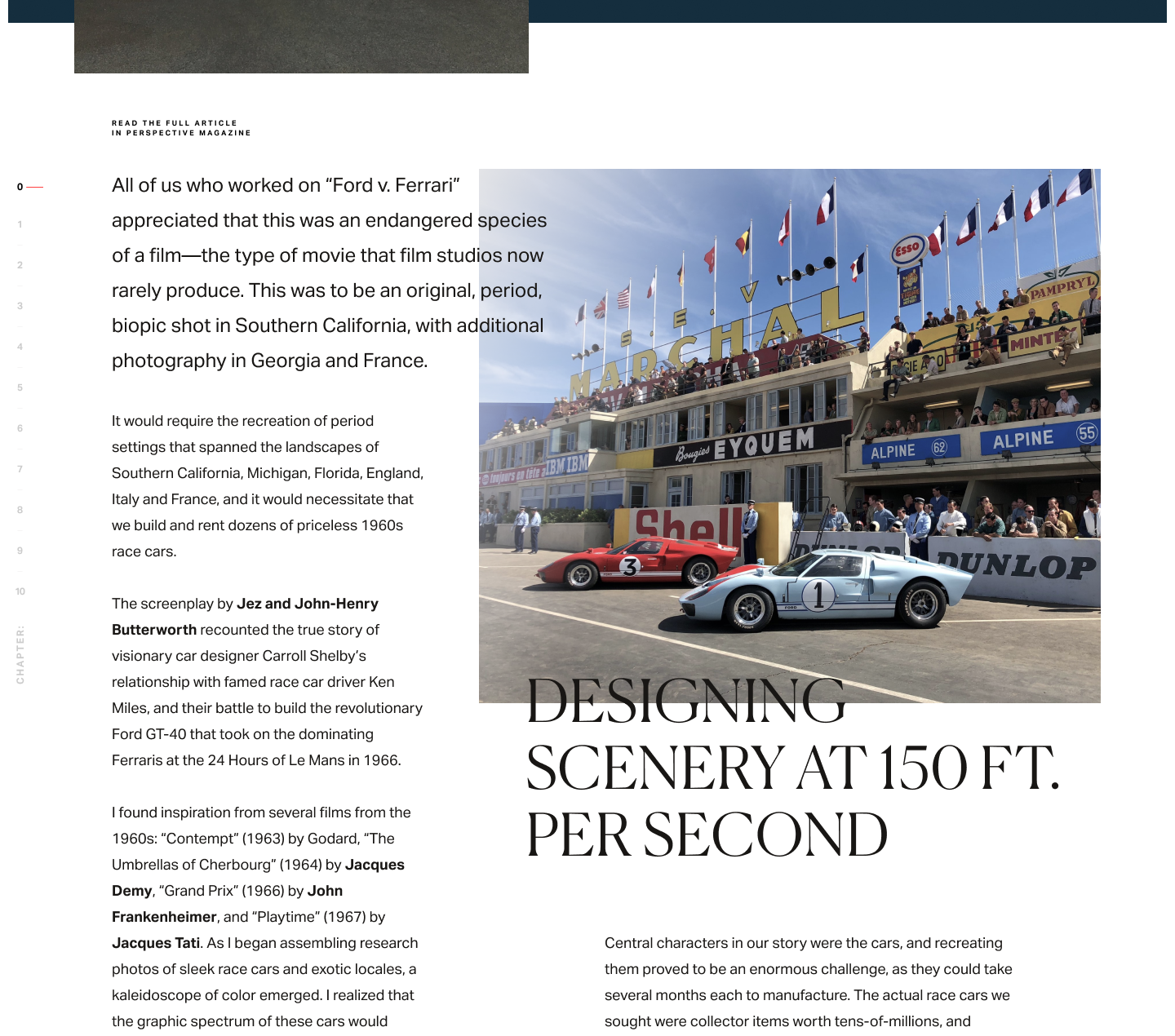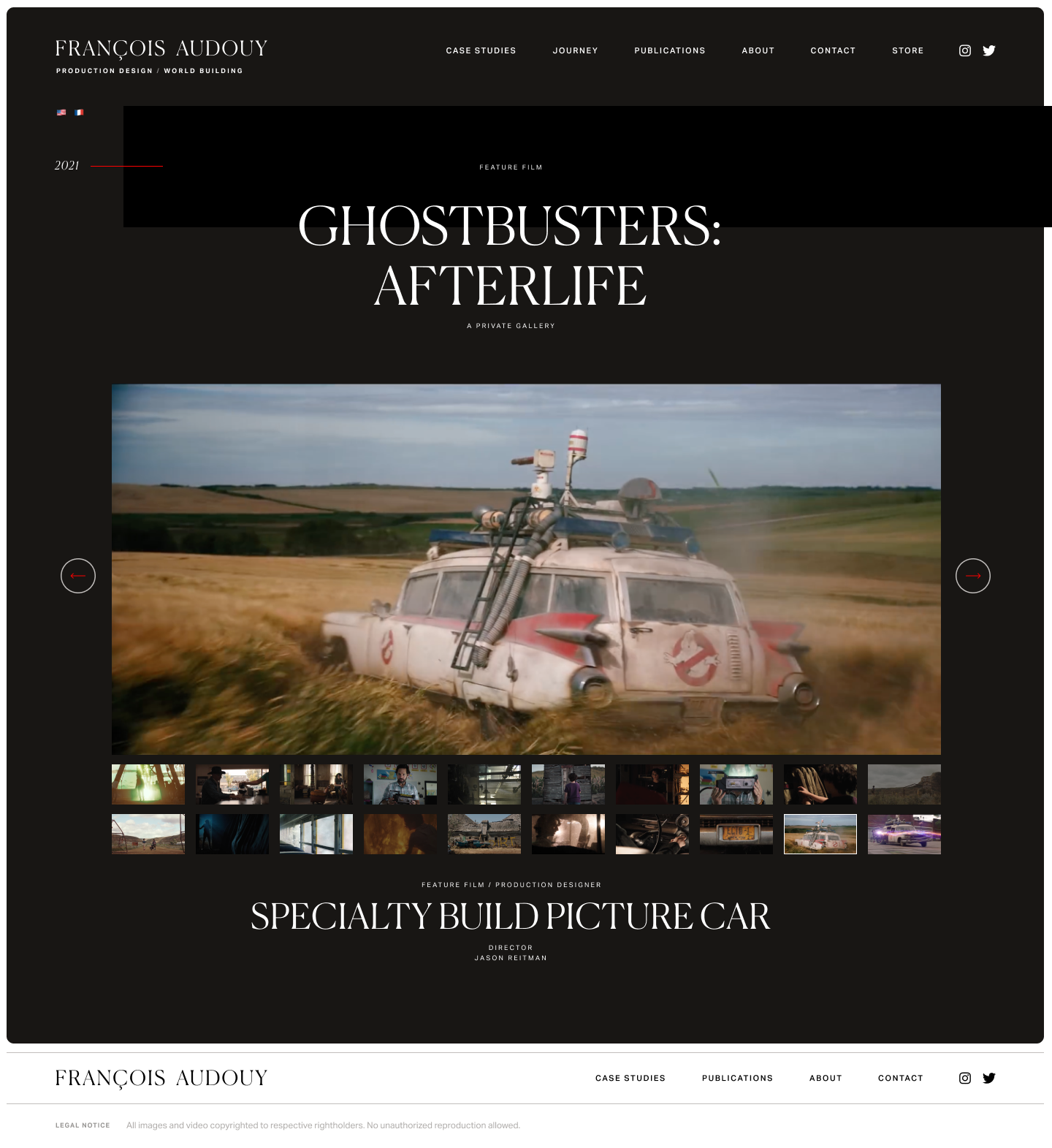
It's almost easy to boast about the end-result when it comes to Hollywood blockbusters, but with an eye toward the details and processes, it's much more approachable subject matter for anyone looking to learn more about production design and the Hollywood machine.- Wild Forest Inc. Team


Q: What influenced your chosen technical approach, and how did it go beyond past methods?
A: To make it engaging to consume decades of work, the sheer amount of lifting required on the content production alone was staggering. It had to flow and be engineered in such a way that a user could find their place and return back to it with ease, and the same goes for the backend. WordPress and blocks allowed for the creation of templates while still allowing for custom tweaks to make each page unique.
Q: Tell us about your initial moodboard, wireframe, or prototype. How did things change throughout the process?
A: We don't always find the work precious, so iterating on original ideas is fast and design versions get hacked up and destroyed. In the end, only small components of the original approach remain after seeing how things don't work well and how graphics change. With legal approving video content, or with technological developments, it's a forever morphing organism. What you see developed is an accurate reflection of the designed pages in Figma.When did you experience a breakthrough or an "a-ha" moment during this project?
Eliminating designed pages and creating content that would take the user on a journey back in time helped to break up the overall haul of the project. Once we got legal approval to incorporate video snippets, it helped break the long scrolling concept of the case studies into more bite-sized and easy to absorb (and reflect on) content. When we were introduced to WP blocks, it helped expedite the development cycle and hierarchy on the backend.
